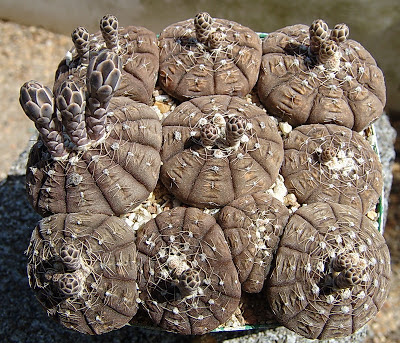The Titanopsis are Flowering
My collection of Titanopsis calcarea plants are all in flower, just in time for a Christmas/Winter Solstice display. Often I don't have an opportunity to enjoy their winter solstice flowers, because they are safely inside their over-wintering frames and covered with several layers of clear plastic. This year however, the weather has been warm enough to allow removing the plastic and take a few photos.
I was particularly excited to see three of my seedlings in flower. These three plants have very nicely textured leaves and they grew rapidly this past summer. However, I did not expect flowers until sometime next year, but they decided to join the other Titanopsis in flowering during the past two weeks. Yes, I did get my brush a do a little pollinating. :)
Flowering along with these seedlings was my oldest and largest Titanopsis calcarea plant. The seed that produced this plant was planted in October 1995. The pot is a 15cm ceramic pot.
Obviously, Titanopsis calcarea are enjoying the increased light and lower winter night temperatures that the outdoor over-wintering frames provide. I'm just happy their flowering coincided with a bit of warm weather.
I wish everyone a very Happy Holiday Season and a Wonderful New Year. It has been a great pleasure discussing our favorite plants over the past year and I look forward to it continuing in 2014.
Bob

.jpg)



.jpg)















.jpg)


















.jpg)




.jpg)



